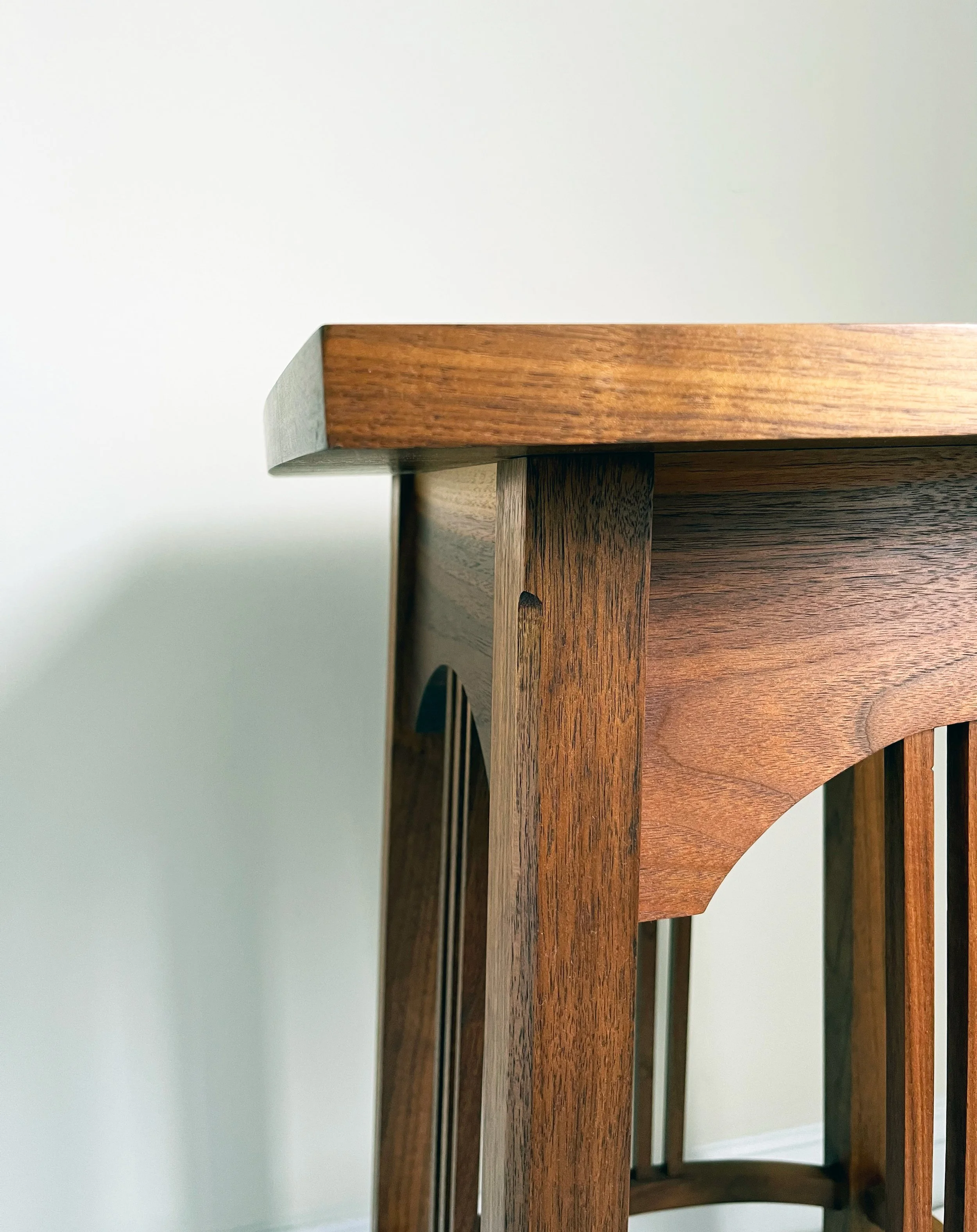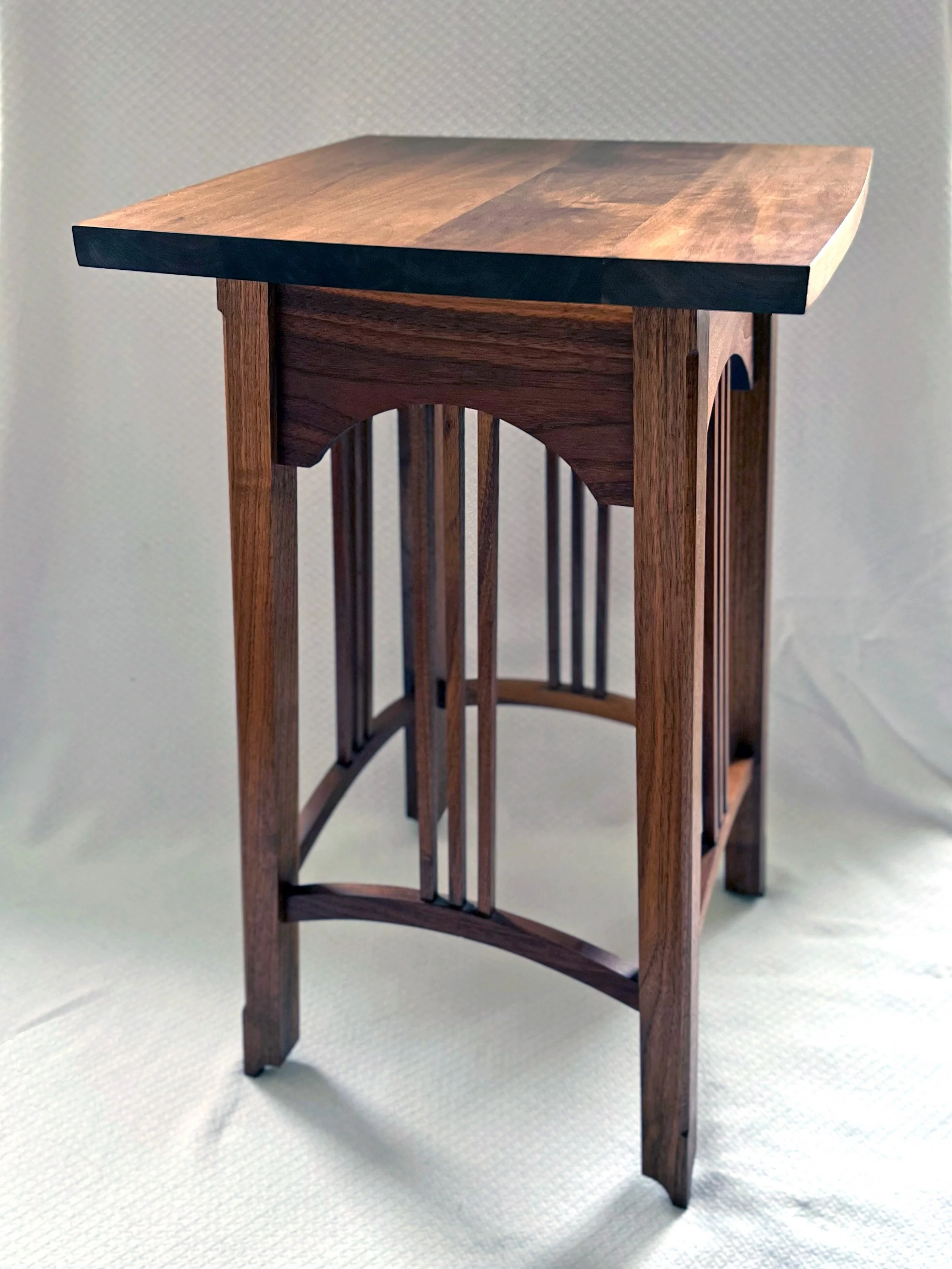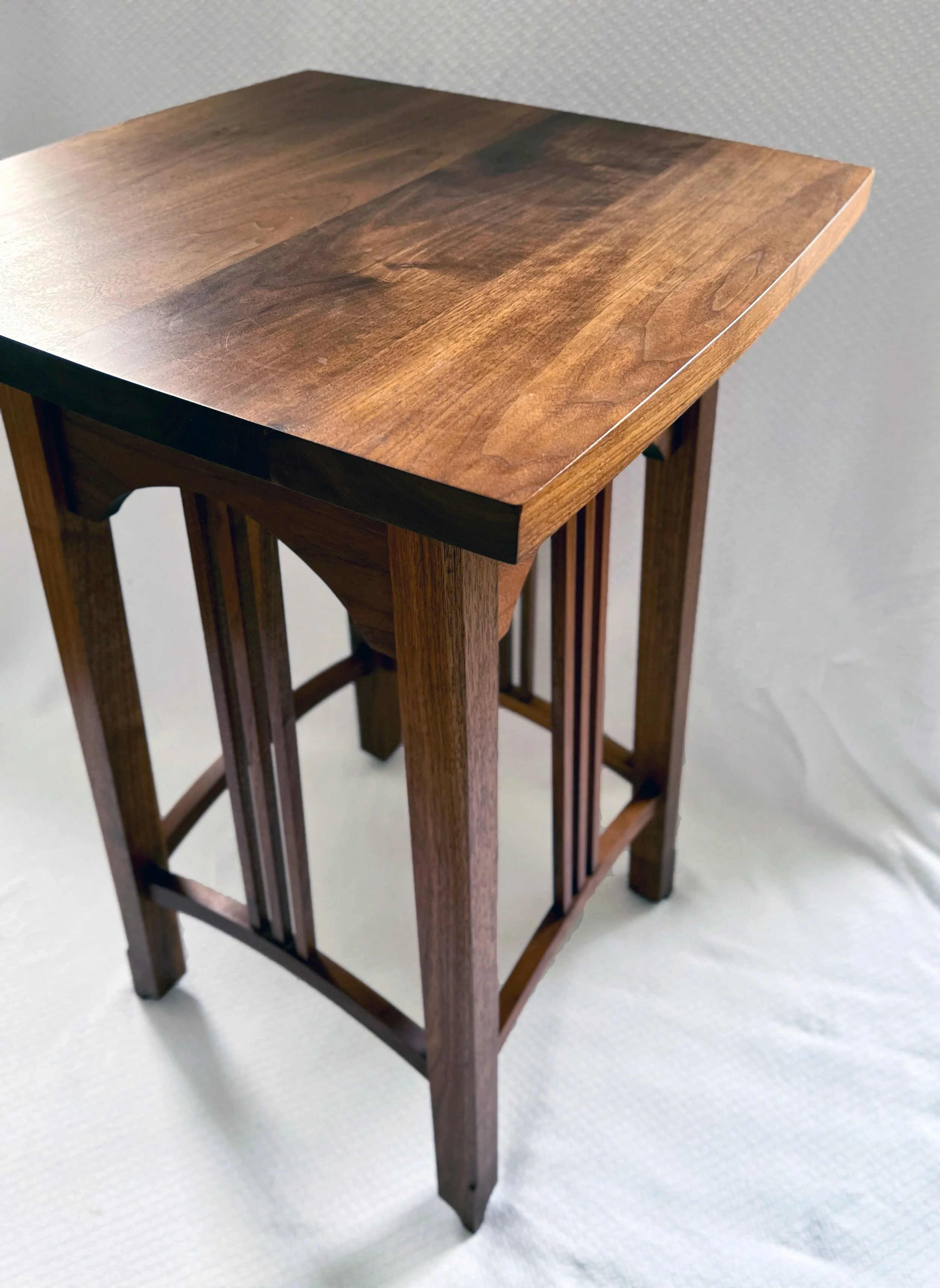
FURNITURE DESIGN
Klismos
The elegant form of the klismos has existed since Ancient Greece and can be found depicted on many relief carvings and painted amphorae in the ancient world. It saw a revival with Neoclassicism in 18th century Europe and the Federalist period of the early United States. Architect Benjamin Henry Latrobe notably helped popularize these chairs in America by designing several klismoi, including a set for the White House.
I designed and built this klismos from walnut as my second furniture design project in college. The rear legs are secured with true 3” through tenons and hand-turned acorns cap and conceal the joints. The back of the chair was created by stack laminating three pieces of walnut and meticulously sanding a curved edge by hand.
Desk
While creating this mahogany desk, I turned to the characteristic cloud lifts and organic forms of early 20th c. architects Greene and Greene for inspiration. A cloud lift motif, originally derived from Asian woodworking traditions, appears in the legs, aprons, and drawer handles and is complemented by curved brackets. Nearly every edge of the desk is eased and subtle plane changes cast thin shadow lines across the beautiful natural wood.
This desk has served as my office desk for several years now. It continues to be a poetic reminder that conceptual design is meant to transform an idea through careful craftsmanship into a tangible object that is lasting, functional, and beautiful.
Side Table
This walnut side table evokes the simplicity and restrained, tapering lines of the Arts & Crafts movement. Subtlety is paired with sturdiness as every element meets at an angle, from the four canted legs to the gently bowed tabletop. The chamfers on the legs are reflected in the shape of the feet, which visually ease the weight of the table as it meets the floor.
This table — my first furniture design/build project — is slightly tall as it was designed to be used as a free-standing table or a plant stand rather than as an end table. Its practical function over the years has instead been to hold stacks of (mostly as-of-yet unread) books.






















